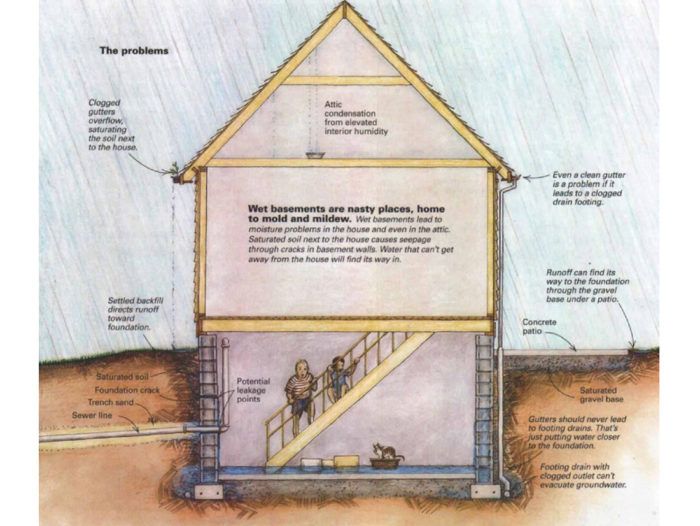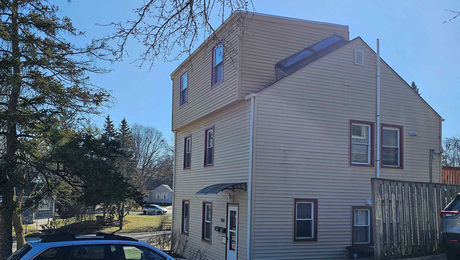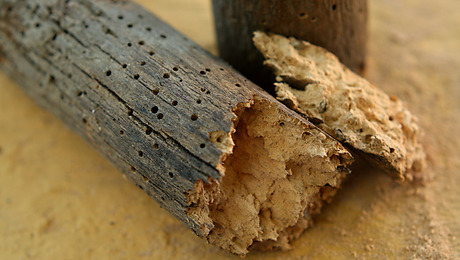Details for a Dry Foundation
Think of the ground around the house as the roof that keeps the foundation dry.

Synopsis: This article details a number of building mistakes that can make foundations leak, with preventive measures that will eliminate wet basements. Among the author’s suggestions is using EPDM to make a type of flashing for the house.
As a research architect at the Building Research Council of the University of Illinois, I am paid to solve some of the more nagging problems that houses have. Frequently, I visit troubled houses, and the most common problem I encounter is poor drainage away from the foundation. This problem became worse as wetlands were developed; I know what to expect when the name of the development is Frog Hollow.
I was once asked to look at a house that had settling problems. There was an addition, built over a crawlspace, that was moving down relative to the main house. The dirt floor of the crawlspace was low, even with the bottom of the footing. The soil along the edge of the footing was in small, rounded clumps, unlike the grainy, gritty surface of the rest of the floor. I dug away at the dirt clumps, and my fingers hit air. I dug a little more and found a space that reminded me of a prison escape tunnel. In all, 10 ft. of the footing was undermined.
Water from a downspout draining too near the corner of the house and the addition was the culprit. The water was taking the path of least resistance to the footing drain and sump pump in the basement of the main part of the house. That path happened to be under the addition’s footing. By following that path, the runoff had washed away the ground under the footing and caused the addition to settle.
Bad drainage can cause a raft of problems
I call my studies of the zone where the house meets the ground “building periodontics.” Proper preventative care of this area can avoid a variety of problems, some less obvious and a lot more serious than a damp cellar.
For example, a common problem in basements, particularly those with block walls, is in ward buckling. This usually shows up as a horizontal crack one or two blocks below grade, or at windowsills, stepping up or down at the corners. A study I did with the Illinois State Geological Survey revealed the cause. Clay soils shrink during dry spells, forming a crevice between the soil and the foundation wall. Wind and light rains carry dirt into this crevice. Then, when seasonal rains come, the soil swells back to its original dimension, plus the increment of added soil. Over time, the wall is ratcheted inward and eventually buckles. You avoid this problem by keeping the soil next to the foundation dry.
Slabs suffer from water problems, too. Garage floors, for example, commonly crack at outside corners near where gutters drain. This cracking may be due to upward expansion of water directly below the corner. It can also be due to adhesion lifting of the perimeter wall, a situation occurring when saturated soil freezes fast to the foundation wall. The soil nearest the surface is the first to freeze, and as the cold weather continues, deeper soil freezes. This saturated soil expands by 8% as it freezes, and it exerts a tremendous force that lifts the soil frozen to the wall above. The wall lifts and cracks the slab.
For more photos and details for a dry foundation, click the View PDF button below.
Fine Homebuilding Recommended Products
Fine Homebuilding receives a commission for items purchased through links on this site, including Amazon Associates and other affiliate advertising programs.

100-ft. Tape Measure

Smart String Line

Original Speed Square

























